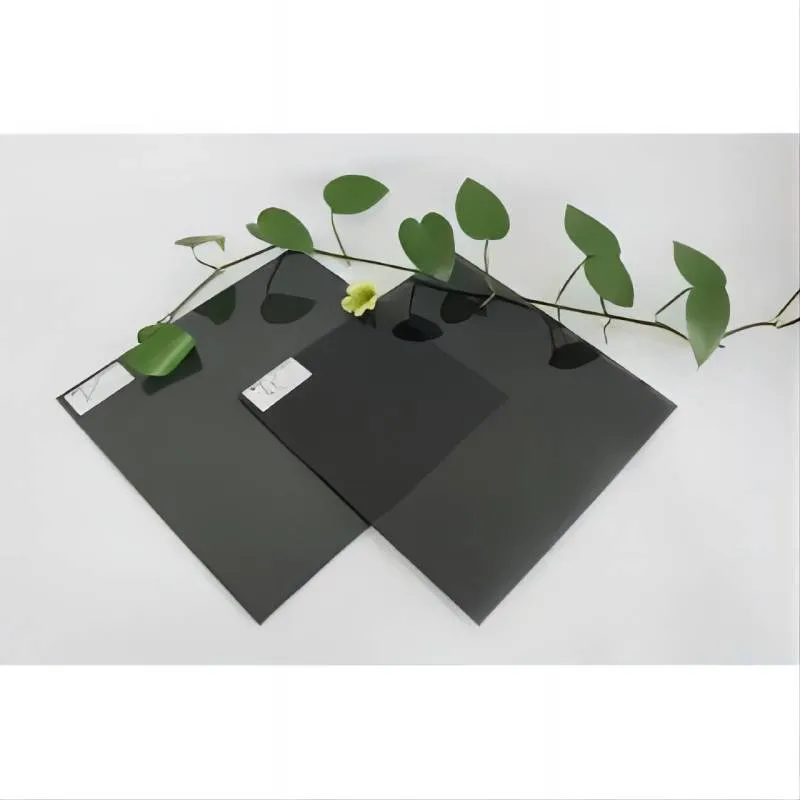Types of Tempered Glass An Overview
Tempered glass, also known as toughened glass, is a type of safety glass that has been treated by processes of extreme heating and rapid cooling to increase its strength compared with normal glass. This process not only enhances the mechanical strength but also makes it more resistant to thermal stress. Understanding the various types of tempered glass available in the market can help you make informed decisions for your architectural, residential, or commercial projects.
1. Standard Tempered Glass
Standard tempered glass is the most commonly used type. It undergoes a heating process to reach temperatures of around 600 degrees Celsius, followed by rapid cooling. This process ensures that the glass is significantly stronger than untempered glass, making it suitable for a variety of applications such as windowpanes, shower doors, and glass doors.
2. Laminated Tempered Glass
Laminated tempered glass consists of two or more sheets of tempered glass that are bonded together with an interlayer, often made of polyvinyl butyral (PVB). This type of glass offers improved safety and sound insulation while also protecting against UV radiation. If broken, the interlayer holds the glass shards in place, minimizing the risk of injury. It is ideal for skylights, storefronts, and glass facades, where safety is a critical concern.
3. Heat-Soaked Tempered Glass
Heat-soaked tempered glass undergoes an additional heat treatment process after standard tempering. This involves holding the glass at a specific temperature for a designated time to detect and eliminate any potential flaws, specifically nickel sulfide inclusions that could lead to spontaneous breakage. This makes heat-soaked tempered glass particularly suitable for critical applications such as balustrades and curtain walls, where the risk of glass failure must be minimized.
types of tempered glass
4. Low-Iron Tempered Glass
Low-iron tempered glass is a type of clear glass that has a lower iron content than standard glass, reducing the greenish tint that can occur in traditional glass products. This type of tempered glass allows higher light transmission, making it ideal for applications where aesthetics are paramount, such as in modern architecture or when used in display cases. It is often used in high-end residential projects, enhancing both visibility and aesthetic appeal.
5. Reflective Tempered Glass
Reflective tempered glass incorporates a special coating that reflects a portion of solar energy, helping to reduce heat gain within buildings. This type of glass is commonly used in commercial buildings, where controlling indoor temperatures can significantly impact energy efficiency. By decreasing glare and enhancing privacy, reflective tempered glass becomes an attractive option for office buildings and towers.
6. Tinted Tempered Glass
Tinted tempered glass is designed to reduce glare and heat from sunlight while providing privacy. Various tints can give a distinctive look to buildings and are available in different shades, including bronze, gray, and blue. This type of glass is often used in automotive applications, storefronts, and residential settings where sunlight control is essential.
Conclusion
The choice of tempered glass can greatly influence the performance, safety, and aesthetic aspects of a building. Whether you opt for standard tempered glass, laminated varieties, or specialized options like low-iron or reflective glass, each type has its unique benefits tailored to different requirements. By understanding these differences, you can select the right type of tempered glass that meets your specific needs, ensuring safety, efficiency, and visual appeal in your projects. As developments in glass technology continue to advance, the range of options available to architects and builders will only keep expanding, enhancing design possibilities and construction methodologies in the future.
 Afrikaans
Afrikaans  Albanian
Albanian  Amharic
Amharic  Arabic
Arabic  Armenian
Armenian  Azerbaijani
Azerbaijani  Basque
Basque  Belarusian
Belarusian  Bengali
Bengali  Bosnian
Bosnian  Bulgarian
Bulgarian  Catalan
Catalan  Cebuano
Cebuano  Corsican
Corsican  Croatian
Croatian  Czech
Czech  Danish
Danish  Dutch
Dutch  English
English  Esperanto
Esperanto  Estonian
Estonian  Finnish
Finnish  French
French  Frisian
Frisian  Galician
Galician  Georgian
Georgian  German
German  Greek
Greek  Gujarati
Gujarati  Haitian Creole
Haitian Creole  hausa
hausa  hawaiian
hawaiian  Hebrew
Hebrew  Hindi
Hindi  Miao
Miao  Hungarian
Hungarian  Icelandic
Icelandic  igbo
igbo  Indonesian
Indonesian  irish
irish  Italian
Italian  Japanese
Japanese  Javanese
Javanese  Kannada
Kannada  kazakh
kazakh  Khmer
Khmer  Rwandese
Rwandese  Korean
Korean  Kurdish
Kurdish  Kyrgyz
Kyrgyz  Lao
Lao  Latin
Latin  Latvian
Latvian  Lithuanian
Lithuanian  Luxembourgish
Luxembourgish  Macedonian
Macedonian  Malgashi
Malgashi  Malay
Malay  Malayalam
Malayalam  Maltese
Maltese  Maori
Maori  Marathi
Marathi  Mongolian
Mongolian  Myanmar
Myanmar  Nepali
Nepali  Norwegian
Norwegian  Norwegian
Norwegian  Occitan
Occitan  Pashto
Pashto  Persian
Persian  Polish
Polish  Portuguese
Portuguese  Punjabi
Punjabi  Romanian
Romanian  Russian
Russian  Samoan
Samoan  Scottish Gaelic
Scottish Gaelic  Serbian
Serbian  Sesotho
Sesotho  Shona
Shona  Sindhi
Sindhi  Sinhala
Sinhala  Slovak
Slovak  Slovenian
Slovenian  Somali
Somali  Spanish
Spanish  Sundanese
Sundanese  Swahili
Swahili  Swedish
Swedish  Tagalog
Tagalog  Tajik
Tajik  Tamil
Tamil  Tatar
Tatar  Telugu
Telugu  Thai
Thai  Turkish
Turkish  Turkmen
Turkmen  Ukrainian
Ukrainian  Urdu
Urdu  Uighur
Uighur  Uzbek
Uzbek  Vietnamese
Vietnamese  Welsh
Welsh  Bantu
Bantu  Yiddish
Yiddish  Yoruba
Yoruba  Zulu
Zulu 

